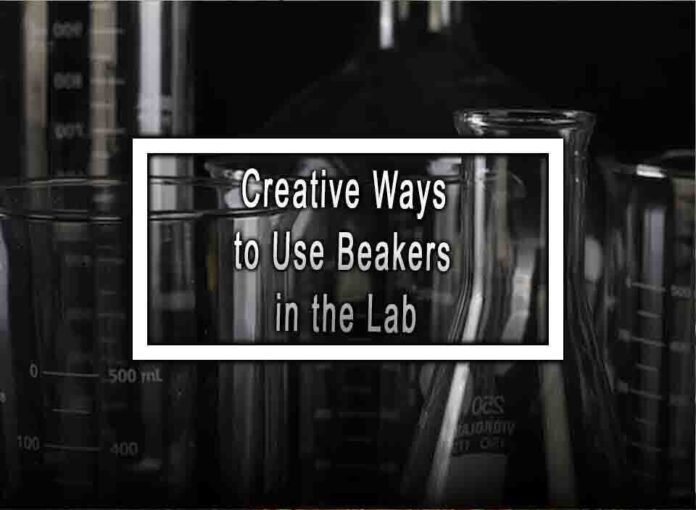Beakers are versatile laboratory glassware used for a wide range of tasks, from simple mixing to more complex experiments. While their primary purpose is to hold and measure liquids, there are several creative ways to use beakers in the lab:
Mixing and Dilution:
- Beakers are excellent for mixing solutions, especially when precise measurements are not required. They can be used to prepare dilutions by adding solvent to a concentrated solution.

Reaction Vessels:
- Beakers can serve as simple reaction vessels for chemical reactions that don’t require precise temperature control. They are suitable for reactions that generate gases or require gentle stirring.
Temporary Storage:
- Use beakers as temporary storage containers for samples or reagents during experiments. This allows you to keep them easily accessible and organized.
Heating and Boiling:
- Beakers are heat-resistant and can be used to heat liquids directly on a hot plate or Bunsen burner. They are particularly useful for boiling liquids or evaporating solvents.
Holding Solid Samples:
- Beakers can hold solid samples during analysis or experimentation. They provide a convenient way to weigh or examine solids without needing specialized containers.
Filtering:
- Use beakers as collection containers during filtration processes. The wide mouth of a beaker can accommodate various types of filtration setups.
Spectrophotometry:
- Transparent beakers can be used as sample holders for spectrophotometry, allowing you to measure the absorbance or transmittance of a solution.
Simple Titration:
- Beakers can be used as titration vessels for simple acid-base or redox titrations. However, for accurate titrations, specialized titration equipment is recommended.
Storing Small Items:
- Beakers can be used to store small lab tools, pipettes, or spatulas, keeping them organized and easily accessible on the lab bench.
Visual Observations:
- Beakers with transparent sides are useful for visual observations during reactions, allowing you to monitor changes in color, precipitates, or gas evolution.
Microwave Digestion:
- Some beakers are microwave-safe and can be used for sample digestion in microwave-assisted chemistry applications.
Demonstrations:
- Use large beakers for classroom demonstrations to showcase reactions, solubility, or other scientific principles to students.
Precipitation and Crystallization:
- Beakers can be used to induce precipitation or crystallization by mixing reactants or changing temperature conditions.
Remember that while beakers are versatile, they might not be suitable for all types of experiments. For more precise measurements, controlled reactions, or specialized applications, consider using dedicated laboratory glassware designed for those purposes. Always adhere to proper lab safety protocols and guidelines when using beakers or any other lab equipment.











